Let me commence by congratulating the Vivekanand International Foundation for organising today’s seminar in collaboration with the Asian Institute of Diplomacy and International Affairs (AIDIA). VIF has always striven to bring together the best minds to ideate on national and international issues and to promote initiatives that further the cause of peace and global harmony. AIDIA, on the other hand, has worked hard from Kathmandu to produce focussed research and promote dialogues on geopolitics and foreign policy. Considering the phalanx of Indian and Nepalese policy makers and illustrious speakers lined up today for debates and discussions, Dr. Arvind Gupta, Director, VIF and Dr. Sunil KC, Director, AIDIA have ably fulfilled the mandate of their respective organisations.
India-Nepal relations are unique, under-pinned by civilizational connections and strong people-to-people ties. The open border between India and Nepal and the free movement of our people is a reflection of these exceptional relations.
The Neighbourhood First policy has been a central tenet of India's foreign policy, focusing on building stronger relationships, promoting regional cooperation, and addressing shared issues with immediate neighbours. And, in India’s Neighbourhood First policy, Nepal occupies a special place. India's approach to engaging with Nepal is characterised by consultation and a focus on achieving tangible outcomes.
The esteemed participants in today’s deliberations will discuss the entire gamut of India-Nepal relations. I intend to highlight just a few points of our engagement.
In the last few years, India and Nepal have undertaken several initiatives to ensure that our linkages become stronger. This approach prioritises enhancing connectivity, infrastructure, development cooperation, security, and fostering greater people-to-people contacts, making our borders truly a connector.
The past year has witnessed significant momentum in terms of visits and dialogue mechanisms.
India’s “Neighbourhood First” policy is reflected in the frequent high-level visits and exchanges between our two countries. These promote a greater understanding between the two countries. The last meeting between our leaders was held on the sidelines of the 79th session of the UN General Assembly in September last year. Our Foreign Ministers have been engaging closely and Dr. Arzu Rana Deuba visited India on an official visit in August last year. During her visit, the Foreign Minister also called on the Prime Minister.
The Foreign Minister and our External Affairs Minister met on the sidelines of the 8th Indian Oceans Conference in Muscat in February this year and more recently, Dr. Deuba was in India to attend the Raisina Dialogue last month. She had a bilateral meeting with EAM on the sidelines of the Dialogue. In addition to visits by the Foreign Minister, we have had Ministerial visits by Nepal’s Energy Minister, Minister of Water Supply and Minister for Forests and Environment.
Our bilateral dialogue mechanisms encompass the diversity of our multi-faceted engagement and help us move forward in a coherent and coordinated manner. At the functional level, India and Nepal have more than 40 bilateral institutional mechanisms covering the entire spectrum of our relations. The year began with the India-Nepal Inter-Governmental Committee on Trade and Transit which was held in Kathmandu. This was followed by the meetings on India-Nepal Railway cooperation. Power cooperation has emerged as a key vector in our engagement and a meeting of the Joint Working Group on Power Sector Cooperation was held recently. Similarly, the Joint Working Group on Border Management was held in Pokhara a few days back.
The momentum of our engagement continues in the weeks ahead. From India, the Minister of Agriculture and Farmers’ Welfare is scheduled to participate in the 3rd BIMSTEC Agriculture Ministerial Meeting to be held in Kathmandu on 9 April. The visit will provide an opportunity for the signing of the MoU for Cooperation in the field of Agriculture between India and Nepal.
The energy partnership between our two sides has emerged as a shining example of our mutually beneficial cooperation. The last 3 years have seen a tremendous growth in hydropower exports from Nepal to India from 39 MW to around 1,000 MW. This has enabled hydropower exports to become a new revenue earner for the Nepalese economy. In the years to come such energy exports will be helpful to Nepal as it moves to ever higher growth trajectories. This is also be a tangible way to help lessen the trade deficit with India. Equally important, the finalisation of the trilateral power trade agreement between India-Nepal and Bangladesh shows how Nepal is enabling regional integration.
Integration of our digital economies play an important role in promoting people-to-people movements and easier trade. Nepal has started accepting UPI payments, which is an instant real-time payment system developed by India to facilitate inter-bank transactions through mobile phones, since March last year. It works through interoperability with FonePay QR of Nepal. I now look forward to making payments in Nepal during my next trip using my phone as I do in India.
India and Nepal have a deep development cooperation. A major portion of our development engagement is focussed on building large scale infrastructure projects. Importantly, these are under grants. High Impact Community Development Projects are another important element of the India-Nepal Development Partnership. These infrastructure projects are implemented at the grass root level in the priority sectors identified by the Government of Nepal, such as health, education, drinking water, sanitation, rural electrification, and agriculture. In January last year, the budgetary ceiling for implementation of these Projects has been increased from NPR 5 Crores to NPR 20 Crores. Thus far, more than 560 projects have been taken up costing approximately NPR 1,300 Crores. Similarly, so far, 1009 ambulances and 300 school buses have been distributed across various districts in all the Provinces of Nepal. Our goal is to share India’s own developmental experiences with Nepal and assist in whatever way we can.
As I move towards conclusion, let me speak about the organic cultural link between India and Nepal. Ultimately, these bonds between the people of the two countries are the real bridges and the Government of India has prioritised initiatives to promote these people-to-people contacts. More than 1,500 Nepalese students travel to India each year on scholarships across disciplines and provide deeply valuable perspectives. Since 2001, around 38,000 Nepalese students have engaged with India under these scholarships. The Indian Technical and Economic Cooperation, or the ITEC, programme started in 1964 has proved to be a valuable tool for fostering understanding between India and Nepal and to help learn from each other’s experiences. Since 2001, more than 3000 professionals, bureaucrats, and defence personnel from Nepal have participated in programmes under ITEC. In just the last three years, around 155 doctors, 30 judicial officers, 30 officers from the office of the Attorney General of Nepal, 230 Nepal Police and 50 Armed Police Force professionals from Nepal have taken part in ITEC Programmes and provided a significant boost to the understanding between our two countries
Ladies and Gentlemen, India’s comprehensive and longstanding ties with Nepal stand on their own footing and are independent of the relations with third countries. India is confident about the strength and enduring nature of its ties with Nepal and will continue to work together towards advancing bilateral ties for our mutual benefit as well as for safeguarding India’s interest in the region.
Thank you for your patient listening and happy deliberations for the day ahead!




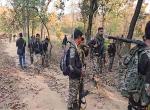
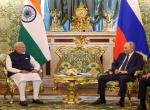
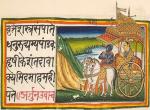

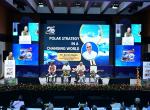
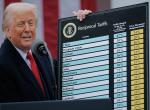
Post new comment